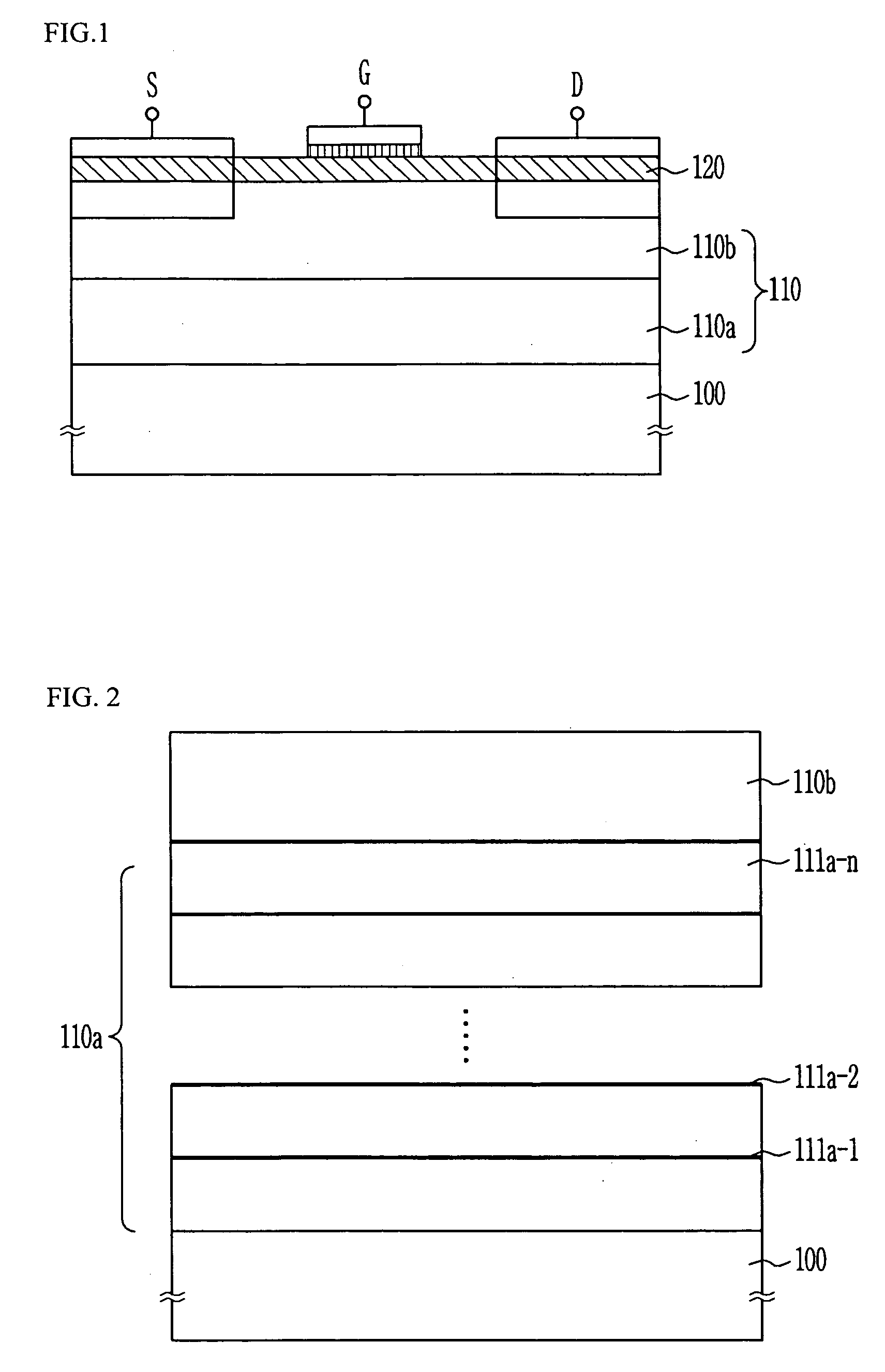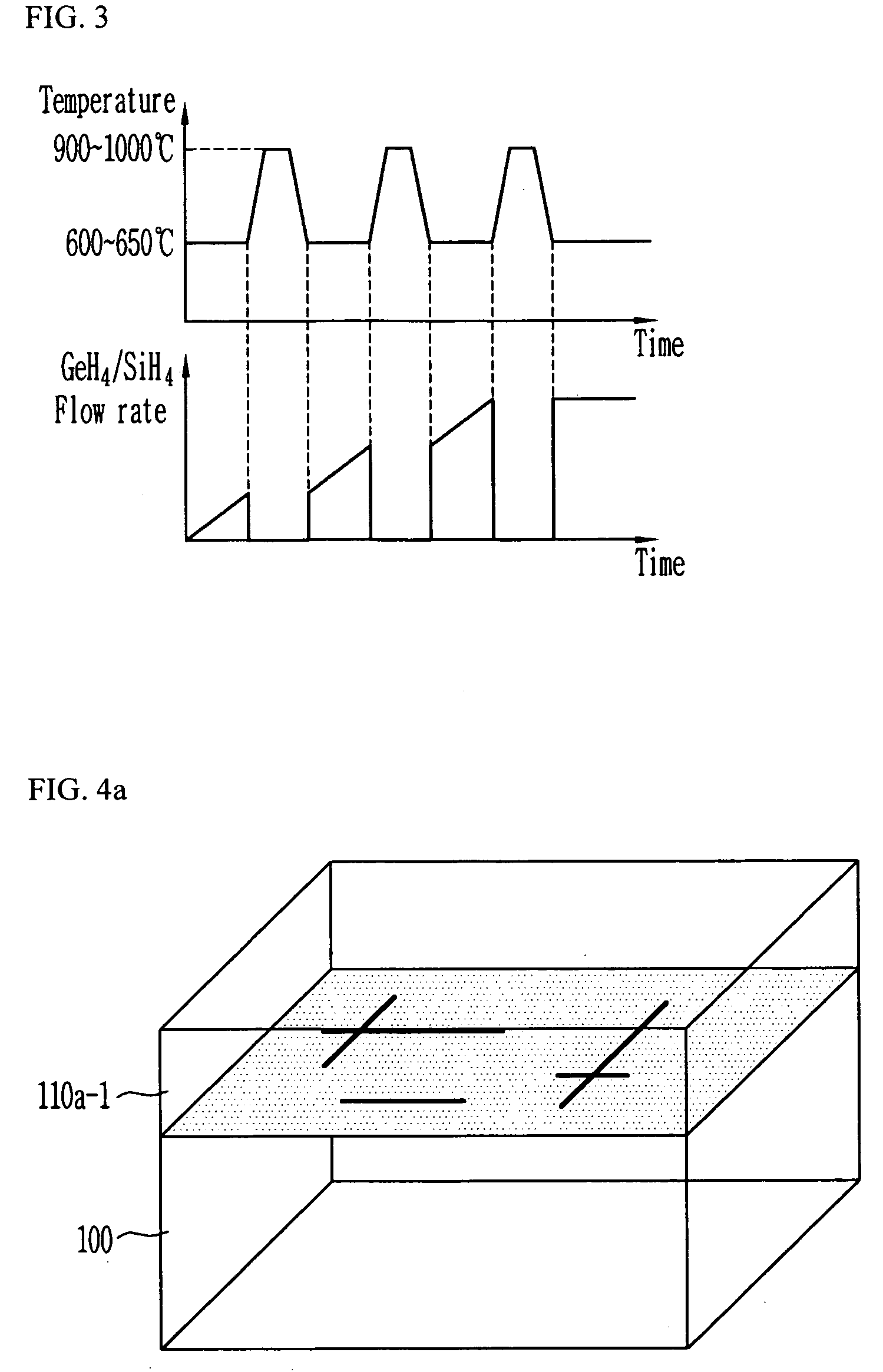Method of forming stress-relaxed SiGe buffer layer
a buffer layer and stress-relaxed technology, applied in the direction of basic electric elements, electrical equipment, semiconductor devices, etc., can solve the problems of shortening the process time, degrading device characteristics or generating leakage current, and affecting the quality of the product, so as to reduce the density of surface dislocation and small thickness
- Summary
- Abstract
- Description
- Claims
- Application Information
AI Technical Summary
Benefits of technology
Problems solved by technology
Method used
Image
Examples
Embodiment Construction
[0037] Exemplary embodiments of the present invention will now be described more fully with reference to the accompanying drawings. This invention may, however, be embodied in different forms and should not be construed as limited to the embodiments set forth herein. Rather, these embodiments are provided so that this disclosure will be thorough and complete, and will fully convey the scope of the invention to those skilled in the art.
[0038]FIG. 1 is a cross-sectional view illustrating a silicon-based MOS transistor which employs a SiGe buffer layer in accordance with the present invention.
[0039] A SiGe buffer layer 110 including a graded composition layer, i.e., a graded Si1-xGex layer 110a and a constant composition layer, i.e., constant Si1-yGey layer 110b which are formed on a silicon substrate 100. A gate of a MOS transistor is formed above the SiGe buffer layer 110, and a source S and a drain D are formed in both sides of the SiGe buffer layer 110, and a tensily strained sil...
PUM
| Property | Measurement | Unit |
|---|---|---|
| temperature | aaaaa | aaaaa |
| temperature | aaaaa | aaaaa |
| temperature | aaaaa | aaaaa |
Abstract
Description
Claims
Application Information
 Login to View More
Login to View More - R&D
- Intellectual Property
- Life Sciences
- Materials
- Tech Scout
- Unparalleled Data Quality
- Higher Quality Content
- 60% Fewer Hallucinations
Browse by: Latest US Patents, China's latest patents, Technical Efficacy Thesaurus, Application Domain, Technology Topic, Popular Technical Reports.
© 2025 PatSnap. All rights reserved.Legal|Privacy policy|Modern Slavery Act Transparency Statement|Sitemap|About US| Contact US: help@patsnap.com



